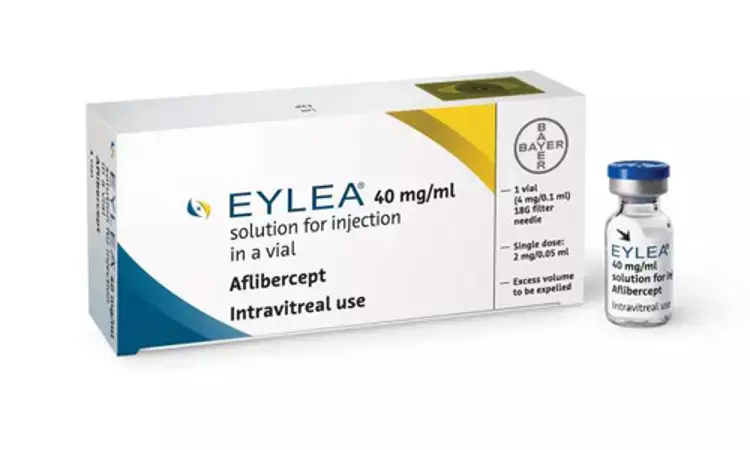- Home
- Medical news & Guidelines
- Anesthesiology
- Cardiology and CTVS
- Critical Care
- Dentistry
- Dermatology
- Diabetes and Endocrinology
- ENT
- Gastroenterology
- Medicine
- Nephrology
- Neurology
- Obstretics-Gynaecology
- Oncology
- Ophthalmology
- Orthopaedics
- Pediatrics-Neonatology
- Psychiatry
- Pulmonology
- Radiology
- Surgery
- Urology
- Laboratory Medicine
- Diet
- Nursing
- Paramedical
- Physiotherapy
- Health news
- Fact Check
- Bone Health Fact Check
- Brain Health Fact Check
- Cancer Related Fact Check
- Child Care Fact Check
- Dental and oral health fact check
- Diabetes and metabolic health fact check
- Diet and Nutrition Fact Check
- Eye and ENT Care Fact Check
- Fitness fact check
- Gut health fact check
- Heart health fact check
- Kidney health fact check
- Medical education fact check
- Men's health fact check
- Respiratory fact check
- Skin and hair care fact check
- Vaccine and Immunization fact check
- Women's health fact check
- AYUSH
- State News
- Andaman and Nicobar Islands
- Andhra Pradesh
- Arunachal Pradesh
- Assam
- Bihar
- Chandigarh
- Chattisgarh
- Dadra and Nagar Haveli
- Daman and Diu
- Delhi
- Goa
- Gujarat
- Haryana
- Himachal Pradesh
- Jammu & Kashmir
- Jharkhand
- Karnataka
- Kerala
- Ladakh
- Lakshadweep
- Madhya Pradesh
- Maharashtra
- Manipur
- Meghalaya
- Mizoram
- Nagaland
- Odisha
- Puducherry
- Punjab
- Rajasthan
- Sikkim
- Tamil Nadu
- Telangana
- Tripura
- Uttar Pradesh
- Uttrakhand
- West Bengal
- Medical Education
- Industry
T&E Dosing of intravitreal Aflibercept Improves Macular Edema after central retinal vein occlusion: Study

Retinal vein occlusion is a common cause of vision loss in patients with chronic macular edema. A recent study suggests that intravitreal aflibercept (IVT-AFL) treat-and-extend (T&E) dosing, improves anatomical and functional outcomes in patients with macular edema, secondary to central retinal vein occlusion (CRVO). The research has been published in the AMERICAN JOURNAL OF OPHTHALMOLOGY on February 05, 2021.
Previous study findings demonstrated that IVT-AFL was beneficial for the treatment of macular edema secondary to CRVO. However, Post-hoc assessment of the different dosing subgroups demonstrated some de-stabilization of the disease with PRN dosing. Post-hoc analyses of COPERNICUS and GALILEO supported the implementation of proactive treatment to prevent deterioration of functional and anatomic outcomes.
Treat and extend (T&E) is a proactive, individualized dosing strategy whereby the patient receives an injection at every visit. Additionally, with T&E dosing regimens, the need for interim monitoring is minimized, which reduces the number of appointments per patient and minimizes the need for monitoring visits. However, T&E dosing regimens have not been evaluated in large-scale studies of IVT-AFL for the treatment of macular edema secondary to CRVO. Therefore, Dr Jean-François Korobelnik and team conducted a study to assess the efficacy and safety of IVT-AFL administered in a T&E dosing regimen in patients with macular edema secondary to CRVO.
CENTERA was an open-label, multicentric, Phase 4 clinical study of 162 patients with centre-involved macular edema secondary to CRVO for no longer than 3months. It was a single-arm study in which patients received 2mg IVT-AFL at baseline and every 4weeks (wks) until disease stability criteria were met (or until Wk20), at which point treatment intervals were adjusted in 2-wk increments based on functional and anatomic outcomes.
Key findings of the study were:
• From baseline to Week 76, researchers found that about 65.6% of patients gained ≥15 letters.
• In the T&E phase, they noted that about 45.0% of patients achieved a mean treatment interval of ≥8 weeks.
• They also noted that the last and next planned treatment interval of ≥8 wks was achieved by 63.1% (n=101) and 67.5% (n=108) of patients, respectively.
• They found that the mean best-corrected visual acuity increased from 51.9 letters at baseline to 72.3 letters at Week 76 (mean change: +20.3 letters).
• They also found that the mean central retinal thickness decreased from 759.9 µm at baseline to 265.4 µm at Week 76 (mean change: −496.1 µm).
The authors concluded, "Clinically meaningful improvements in functional and anatomic outcomes were achieved with IVT-AFL T&E dosing. Most patients achieved a last actual and last intended treatment interval of ≥8 wks, therefore treatment intervals may have been extended even further with a longer study duration."
For further information:
https://www.ajo.com/article/S0002-9394(21)00058-1/fulltext
Medical Dialogues Bureau consists of a team of passionate medical/scientific writers, led by doctors and healthcare researchers. Our team efforts to bring you updated and timely news about the important happenings of the medical and healthcare sector. Our editorial team can be reached at editorial@medicaldialogues.in.
Dr Kamal Kant Kohli-MBBS, DTCD- a chest specialist with more than 30 years of practice and a flair for writing clinical articles, Dr Kamal Kant Kohli joined Medical Dialogues as a Chief Editor of Medical News. Besides writing articles, as an editor, he proofreads and verifies all the medical content published on Medical Dialogues including those coming from journals, studies,medical conferences,guidelines etc. Email: drkohli@medicaldialogues.in. Contact no. 011-43720751


